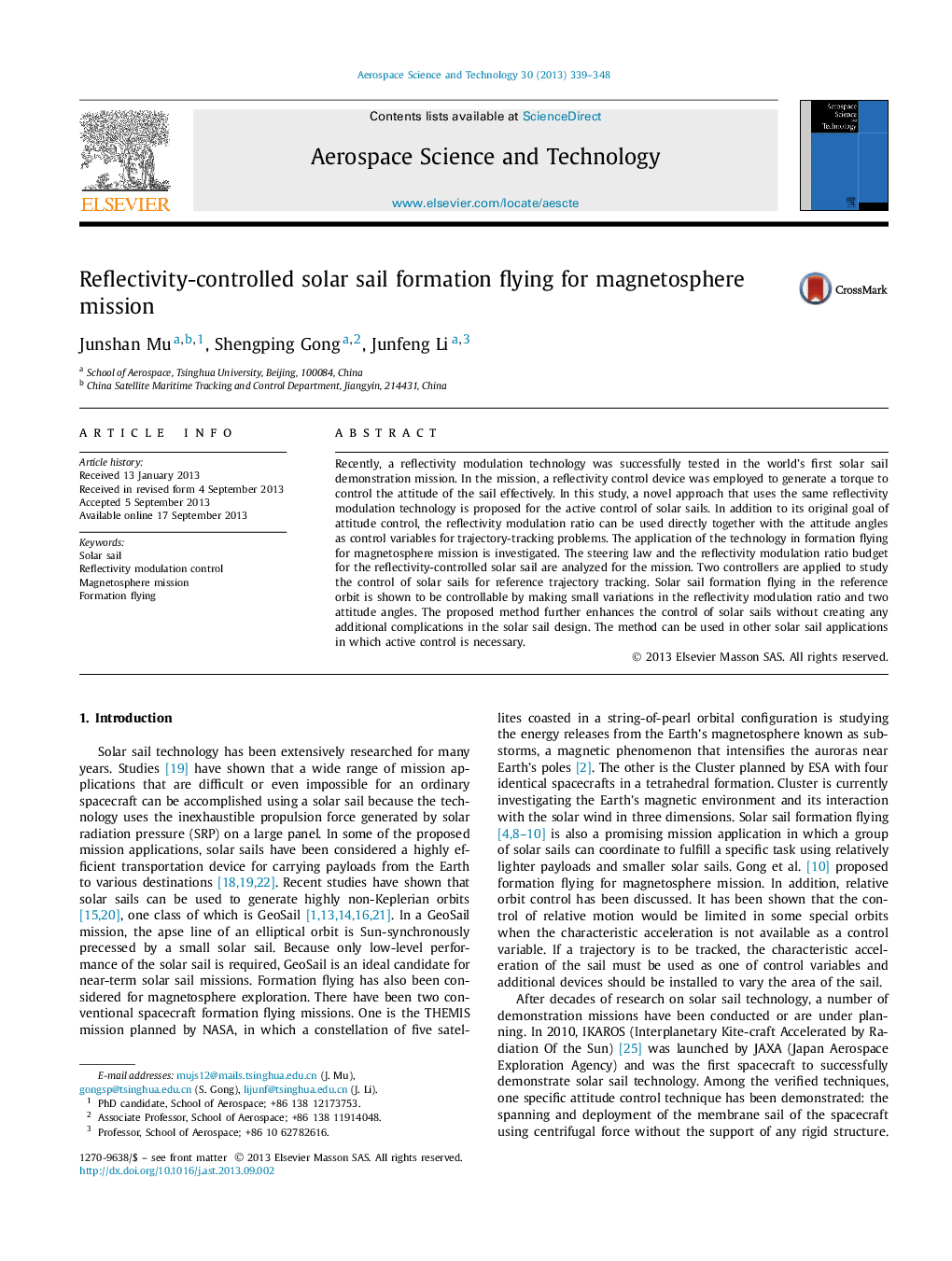| Article ID | Journal | Published Year | Pages | File Type |
|---|---|---|---|---|
| 1718176 | Aerospace Science and Technology | 2013 | 10 Pages |
Recently, a reflectivity modulation technology was successfully tested in the worldʼs first solar sail demonstration mission. In the mission, a reflectivity control device was employed to generate a torque to control the attitude of the sail effectively. In this study, a novel approach that uses the same reflectivity modulation technology is proposed for the active control of solar sails. In addition to its original goal of attitude control, the reflectivity modulation ratio can be used directly together with the attitude angles as control variables for trajectory-tracking problems. The application of the technology in formation flying for magnetosphere mission is investigated. The steering law and the reflectivity modulation ratio budget for the reflectivity-controlled solar sail are analyzed for the mission. Two controllers are applied to study the control of solar sails for reference trajectory tracking. Solar sail formation flying in the reference orbit is shown to be controllable by making small variations in the reflectivity modulation ratio and two attitude angles. The proposed method further enhances the control of solar sails without creating any additional complications in the solar sail design. The method can be used in other solar sail applications in which active control is necessary.
